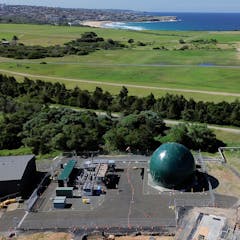
Articles on Food waste
Displaying 1 - 20 of 107 articles

New research suggests educators can play a crucial role in changing attitudes and actions about food waste and equip future marketing professionals with the tools to tackle sustainability challenges.

Food waste is a serious emergency in Canada and around the world. Here are four practical steps we can take this Earth Day to eat more healthily, reduce food waste and save the planet.

If leftovers aren’t saved and reheated properly, it could put you at risk of food poisoning.

During the Tudor period, religious beliefs shaped people’s attitudes towards food and food waste.

Human health depends on having a liveable planet and this is inextricably linked to food systems.

It’s often challenging to live up to your new year’s resolutions – but becoming greener is surprisingly easy.

About half of our Halloween pumpkins go entirely uneaten.

Halloween is a sustainability nightmare – but it doesn’t have to be.

A household survey has revealed three distinct patterns of consumer behaviour around food waste.

We can’t entirely eliminate food waste – but we can find cheap ways to turn it into something useful.

Those who grow their own food in gardens and allotments waste less and eat more healthily – but not everyone has the chance to do so.

Sydney’s 14 wastewater treatment plants could be modified to also accept food waste, research shows. The ‘anaerobic digestion’ process would produce energy as well as nutrients for reuse.

When food scraps and garden clippings are sent to landfill, it’s not just a waste of nutrients and water. The rotting organic matter trapped in landfill produces methane, a potent greenhouse gas.

Indonesians are consuming more and more processed foods, including sugary drinks, salty snacks, junk food, and unhealthy fats. These changes take a toll on people’s health, as well as the environment…

Selling misshapen, bruised fruit and vegetables that are not a standard size requires a supply chain rethink, according to research.

Apartments have lower waste recycling rates than houses, which means the growing numbers of apartment dwellers could add to Australia’s waste management crisis. But there are solutions to the problem.

Food shortages have revealed weaknesses in UK supply chains.

Experimenting with low-waste living shows it’s not easy being green. But householders can help policymakers design better waste management systems.

Many developing nations have little cold storage and lose much of their perishable food before it gets to markets. Climate-friendly refrigeration can provide huge environmental and social benefits.

Australians buy so much stuff that they have run out of space in their homes for it all, so storage businesses are booming.
